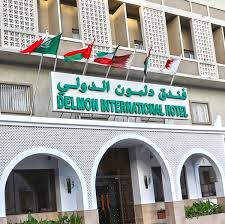The Philippine School is a well-known educational institution in Dubai that caters to Filipino students from kindergarten to grade 12. Established in February 2008, the school has been committed to providing quality education to its students, focusing on producing lifelong learners and responsible global citizens. The school’s vision is to lead innovative school leadership in Dubai with transformative global educators who provide state-of-the-art pedagogies in a student-centered environment.
The Philippine School has a dynamic and visionary leader who ensures that the TPS community is led toward excellence. The school’s commitment to quality assurance, vision of excellence, community, and inclusivity is paramount to its long-range vision. The school’s student-centered approach provides a supportive and nurturing environment for its students to grow and develop.
The Philippine School embodies solid Filipino culture and values with a curriculum that integrates the Filipino language, culture, and history. With its commitment to excellence and innovation, The Philippine School is an institution that continues to contribute significantly to Dubai’s education sector.
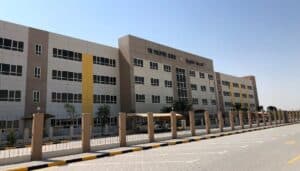
Historical Background
The Philippine School has a rich history influenced by different cultures and events. This section will discuss the Spanish Influence, American and Post-War Periods.
Spanish Influence
The Spanish friars established the country’s primary schools, colleges, and universities to make the native Filipinos obedient and God-fearing Christians. The language of instruction during this period was Spanish, which became the official language of the Philippines until the end of the Spanish regime.
American and Post-War Periods
The American colonization of the Philippines in the early 20th century significantly changed the Philippine education system. Spanish was replaced in classrooms by the introduction of English by Americans. They also established a public school system, which provided free education for all children.
During the Japanese occupation in World War II, the Philippine education system was disrupted, and many schools were closed. After the war, the Philippine government established the Commission of Education, Health, and Public Welfare to reopen the schools. In 1947, the Philippine government passed the Education Act to provide free and compulsory education for all children.
In the 1970s, the government introduced the bilingual policy, which aimed to promote the use of Filipino and English as the languages of instruction in schools. This policy recognized the importance of the Filipino language in promoting Filipino culture and identity.
Today, the Philippine education system is managed by the Department of Education, which provides primary education from Kindergarten to Grade 12. The medium of instruction is in English and Filipino, and the curriculum is designed to promote the holistic development of the students.
The Philippine School has undergone significant changes throughout history, reflecting the influence of different cultures and events. The current education system aims to provide quality education for all children, promoting their academic, social, and emotional development.
Philippine Education System Overview
There are two types of education in the Philippine system: official and informal. Formal education is the academic development from elementary school, or grade school, to secondary school, or high school, and finally to tertiary education, or TVET and higher education. The law divides the system’s focus into three categories: basic, technical-vocational, and higher education.
Department of Education
The Department of Education (DepEd) is the central government agency responsible for managing and administrating primary education in the Philippines. It is responsible for implementing the K-12 program, which covers kindergarten, six years of elementary education, four years of junior high school, and two years of senior high school. The DepEd also supports non-formal education programs, such as the Alternative Learning System (ALS), which provides primary education to out-of-school youth and adults.
Commission on Higher Education
The Commission on Higher Education supervises and regulates higher education institutions (HEIs) in the Philippines. It ensures the quality of education HEIs provide and promotes academic excellence in the country. The CHED also offers scholarships and grants to deserving students and faculty members.
Technical Education and Skills Development Authority
The Technical Education and Skills Development Authority implements technical-vocational education and training (TVET) programs in the Philippines. It aims to provide quality TVET programs that will equip Filipinos with the necessary skills and knowledge to meet the demands of the global workforce. The TESDA also provides skills training and assessment to overseas Filipino workers (OFWs) and others who wish to enhance their skills and knowledge.
The Philippine education system is committed to providing quality education to all Filipinos, regardless of their socio-economic status. It offers public and private school options, as well as local universities and colleges (LUCs) and state universities and colleges (SUCs). The Philippine Qualifications Framework (PQF) is also in place to ensure that education programs in the country are aligned with international standards.
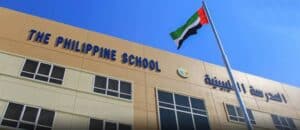
Basic Education Curriculum
The Philippine primary education curriculum is a K-12 program that covers kindergarten and 12 years of primary education. The curriculum is designed to give students sufficient time to master concepts and skills, develop as lifelong learners, and prepare for tertiary education, middle-level skills development, employment, and entrepreneurship.
Elementary Education
Elementary education in the Philippines covers kindergarten and six years of primary education. The curriculum includes the following core subjects: Filipino, English, mathematics, science, social studies, and character education.
The universal kindergarten program was implemented in 2011 to provide early childhood care and development for children five years old and below.
Junior High School
Junior high school covers four years of education from grades 7 to 10. The curriculum includes the following core subjects: Filipino, English, mathematics, science, Araling Panlipunan (social studies), and Edukasyon sa Pagpapakatao (values education).
Senior High School
The senior high school covers two years of education from grades 11 to 12. The curriculum includes the following core subjects: Filipino, English, mathematics, science, and social sciences. Students can choose from academic, technical-vocational-lifelihood, sports, and arts tracks. The tracks aim to provide students with the necessary skills and competencies to pursue higher education or employment after graduation.
Higher Education
The Philippine School offers a range of undergraduate and graduate programs to students seeking higher education. These programs are offered by various higher education institutions (HEIs) administered and regulated by the Commission on Higher Education (CHED).
Undergraduate Programs
Students may follow their interests and ambitions with The Philippine School’s undergraduate programs, which provide a variety of academic and vocational pathways. These courses give students a firm grounding in their subject of study and equip them for the demands of the working world.
Different subjects are covered by undergraduate degrees, including business, engineering, healthcare, education, and the arts. The curriculum is created to provide students with a thorough grasp of their chosen field and the abilities and information required to succeed in that job.
Graduate Studies
The Philippine School’s graduate program gives students advanced knowledge and abilities in the subject area of their choice. Students who desire to continue studying after completing their degree can apply for the program.
The graduate studies program covers various subjects, such as business, education, medicine, and the arts. The curriculum is intended to provide students with the information and abilities needed to succeed in their chosen careers and a greater understanding of their chosen field.
The demands of the professional world are well-prepared for graduates of The Philippine School’s graduate studies program. Employers greatly value them because they possess the knowledge to thrive in their chosen fields.

Technical and Vocational Education
The Philippine School commits to giving its pupils a top-notch education. The school provides technical and vocational education programs and academic courses to provide students with real-world information and abilities that they may use for their chosen vocations.
Tesda Programs
The Philippine School is a registered TESDA training center, meaning its programs meet the agency’s standards for quality and relevance.
The school offers a range of TESDA-approved programs that cover various industries, including technology and livelihood. These programs are designed to give students the skills and knowledge they need to succeed in their chosen careers. Some of the programs offered by the school include:
- Computer Hardware Servicing
- Food and Beverage Services
- Housekeeping
- Programming
Skills Development
In addition to TESDA programs, the Philippine School offers skills development programs to help students develop the skills they need to succeed in their chosen careers. These programs cover various topics, including communication, teamwork, and problem-solving.
The school’s skills development programs are designed to be practical and hands-on, allowing students to apply what they have learned in real-world situations.
Overall, the Philippine School’s technical and vocational education programs are designed to provide students with the skills and knowledge they need to succeed in their chosen careers. Whether students are interested in pursuing a career in technology, hospitality, or any other industry, the school’s programs can help them achieve their goals.
Educational Challenges and Reforms
Access to Education
Access to quality education is a challenge in the Philippines, particularly in rural areas where poverty prevails. Despite efforts to improve enrollment rates, the Philippine Statistics Authority data shows that around 4 million children and young people were out of school in 2013. The Alternative Learning System (ALS) has been implemented to address this issue, allowing out-of-school youth and adults to complete their primary education.
Quality and Standards
According to UNESCO Statistics, the Philippine education system needs help maintaining quality and standards, with a literacy rate of 97.5% for those aged 15-24. The Department of Education and the Commission on Higher Education have implemented various reforms to address this issue, including the Philippine Qualifications Framework. The PQF aims to improve the quality of education and ensure that qualifications are recognized nationally and internationally.
Reform Initiatives
The Philippine government has implemented various reform initiatives to address the education system’s challenges. The Enhanced Basic Education Act of 2013, also known as the K-12 program, was introduced to improve the quality of education and align it with international standards.
Private schools also play a significant role in the Philippine education system, providing an alternative to public education. Private schools are subject to government regulations and must meet specific standards to ensure the quality of education they provide.
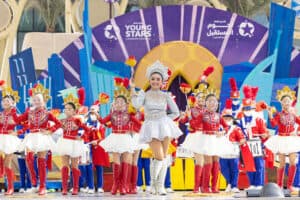
International and Cultural Aspects
Education for Overseas Filipino Workers
The Philippine School is known for its international approach to education, especially for overseas Filipino workers (OFWs). The school understands the unique needs of OFWs, who are often required to relocate to different countries due to work. The curriculum caters to the needs of students who may have to adjust to other cultures, languages, and educational systems. The school provides a supportive environment to help students overcome the challenges of living abroad.
Influence of Religion and Culture
The Philippines is a predominantly Christian country, and this is reflected in the education system. The Philippine School places a strong emphasis on Christian values and teachings. However, the school also recognizes the importance of other religions and cultures. The school offers Islamic studies for Muslim students and celebrates other cultural events such as Chinese New Year and Spanish festivals.
Filipino culture is also an integral part of the curriculum. The school teaches Filipino history, literature, and language. Students learn about the archipelago’s diverse culture and traditions. The school recognizes the importance of preserving the country’s cultural heritage and instilling a sense of pride in Filipino students.
In conclusion, the Philippine School provides students with a culturally diverse and inclusive environment. The school recognizes the unique needs of OFWs and strives to provide a supportive environment. The school’s emphasis on Christian values and teachings is balanced with an appreciation for other religions and cultures. Filipino culture is integral to the curriculum; students learn about the country’s rich history and traditions.
Health and Nutrition in Schools
School Nutrition Programs
The Philippine School recognizes the importance of proper nutrition in the growth and development of students. The Department of Education (DepEd) has launched healthy learning institutions in the primary education sector to strengthen school health and nutrition programs. The Health and Nutrition Center (HNC) is aligning all its activities into one seamless whole to make the department better able to determine the nutritional status of students.
The School Health and Nutrition Program (SHNP) is a vital program of the DepEd that aims to improve the nutritional status of students by providing them with access to nutritious food. The program includes school-based feeding programs, nutrition education, and the provision of safe and potable water. The SHNP is anchored on the belief that proper nutrition is essential for students’ academic performance.
Physical Education
Physical education is an essential aspect of the school curriculum in the Philippines. The Department of Education has implemented the Essential Health Care Programme (EHCP) to promote physical activity among students. The program uses evidence-based interventions that can be delivered cheaply in elementary schools to reduce illness and missed school days.
Physical education sessions are part of the EHCP and are intended to encourage children to be physically active. The program’s objectives are to raise students’ level of physical fitness and lower their chance of obesity and other illnesses. Students who enroll in the program will also take health education seminars emphasizing the value of exercise and a balanced diet.
In conclusion, the Philippine School recognizes the importance of health and nutrition in the growth and development of students. The School Nutrition Programs and Physical Education classes are designed to provide students access to nutritious food and promote physical activity. The programs are implemented to improve students’ academic performance and overall health.
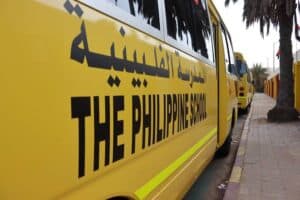
Language and Communication
Primary Languages
The Philippines is a multilingual country with more than 170 languages. However, the two official languages recognized by the government are English and Filipino. English is widely used in business, education, and government, while Filipino, based on Tagalog, is the national language. Spanish was also once commonly spoken in the Philippines due to its colonial history with Spain, but its usage has declined over time.
Language of Instruction
English and Filipino are both used as the medium of instruction in schools in the Philippines. The K-12 Basic Education Curriculum heavily emphasizes communicative competence, meaning language is a primary instrument of thought. As such, the curriculum aims to develop students’ proficiency in both English and Filipino and their ability to communicate effectively in these languages.
English language development in the Philippines has continued to thrive and prosper. The 2010 English curriculum standards for high school have been established, and standard-based evaluation and grading in K to 12 education in the Philippines have been implemented. However, the lack of teachers’ participation in curriculum design and development is an obstacle that affects Philippine schools’ entire teaching and learning process.
Assessment and Grading Systems
National Assessments
The Philippine education system has a comprehensive national assessment framework designed to evaluate student performance at different levels of the education system. The framework is intended to reduce repetitive assessments that use the same approaches and assessment instruments.
Grading Policies
The grading scheme used in elementary and secondary education in the Philippines is intended to represent the consistency between students’ real competency levels and levels of mastery in each subject area. Everyone involved—students, parents, instructors, and administrators—may accurately evaluate the true efficacy of the teaching-learning process. Students’ final grades and general averages are determined by the DepEd K–12 Grading System.
The grading system involves the following steps:
- Add up all the grades from student work.
- Convert the sum for each component to the Percentage Score.
- Convert Percentage Scores to Weighted Scores to show the importance of each element in promoting student learning.
The grading policies ensure that students are assessed fairly and accurately. The DepEd has implemented a deregulated status for schools that comply with the standards and requirements set by the agency. The deregulated status gives schools more autonomy in implementing their grading policies, which align with the DepEd K to 12 Grading System.
Dubai MLS
Dubai MLS presents many opportunities for real estate professionals as their ultimate companions in navigating emerging brokerages, forging essential connections with potential clients, and expanding professional networks. Immerse yourself in Dubai MLS’s diverse services and pave your path to success.

Frequently Asked Questions
What are the tuition fees for the Philippine School in Dubai?
The tuition fees for the Philippine School in Dubai vary depending on the student’s grade level. It is best to contact the school directly for the most up-to-date information on tuition fees.
Does the Philippine School in Abu Dhabi offer a payment plan for tuition fees?
Yes, the Philippine School in Abu Dhabi offers a payment plan for tuition fees. The school has allowed families to pay in installments because it recognizes the financial strain that tuition payments may have on specific families.
What curriculum is followed by the Philippine School in Dubai?
The Philippine School in Dubai follows the curriculum set by the Department of Education in the Philippines. This means the school follows the K-12 program, which covers 13 years of primary education. The curriculum is designed to provide students with a well-rounded education that prepares them for higher education and future careers.
Are there any additional costs besides the Philippine School’s tuition fee?
Yes, there may be additional costs apart from the tuition fee at the Philippine School. These may include fees for textbooks, uniforms, transportation, and extracurricular activities. It is best to contact the school directly for the most up-to-date information on additional costs.
What is the salary range for teachers at the Philippine School in Dubai?
The salary range for teachers at the Philippine School in Dubai varies depending on their qualifications and experience. However, the school is known for offering competitive salaries and benefits to its teachers.
How does the Philippine School in Baniyas compare to other schools regarding fees and curriculum?
The school also follows the curriculum set by the Department of Education in the Philippines, which provides students with a well-rounded education. However, it is best to research and compare different schools to determine the best fit for your child’s needs.








